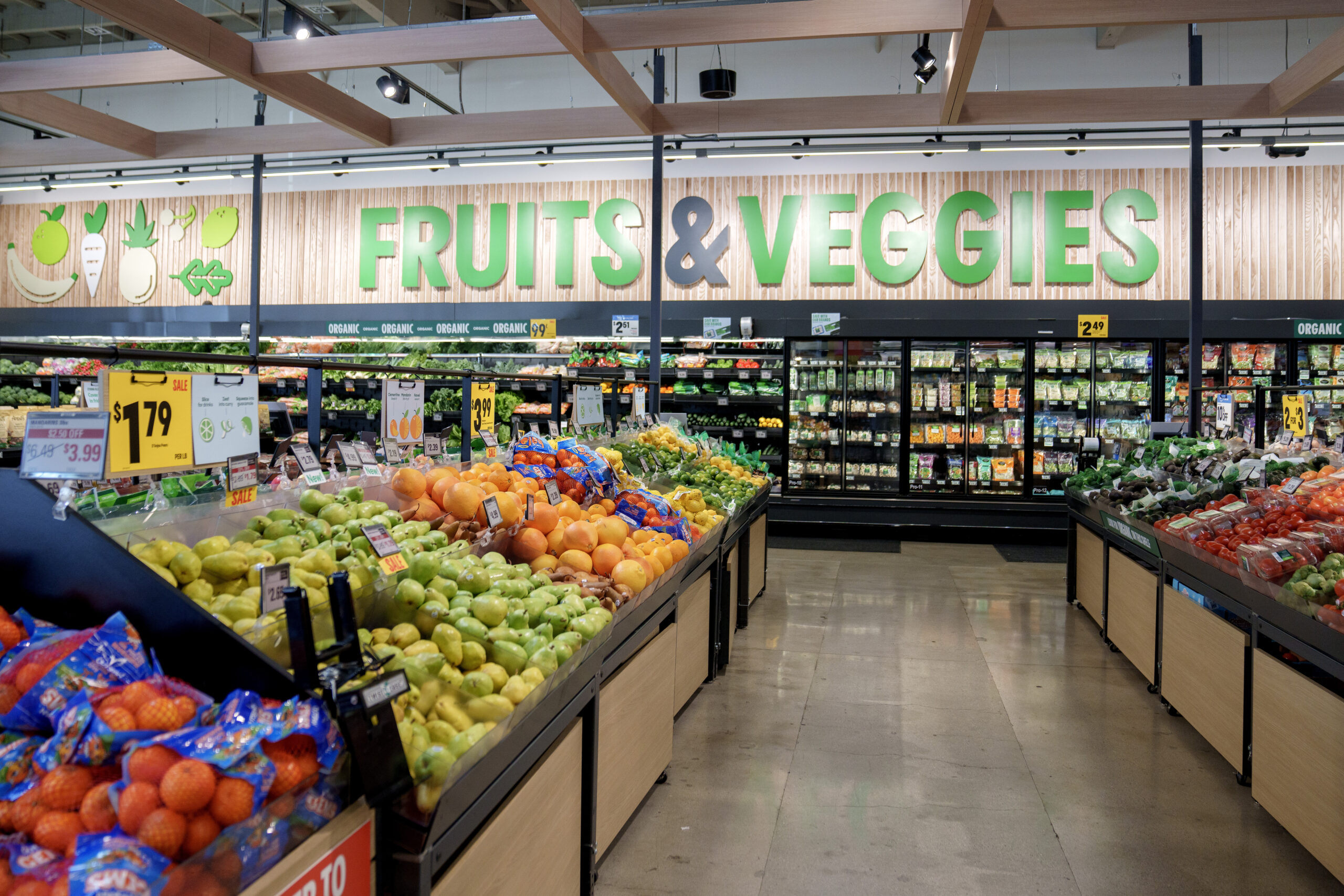The latest expression of Amazon’s go-to-market grocery strategy is a small-format store aptly named Amazon Grocery that threatens market cannibalization. But could this be a winning strategy for the e-commerce giant itching to finally drive impact in an area with which it has long struggled?
At 3,800 square feet, the size — not quite traditional grocery, not quite convenience — may be the Goldilocks footprint the retailer needs. Although distinct from the neighboring Amazon-owned Whole Foods Market, the Chicago-based Amazon Grocery pilot operates out of the organic retailer’s former coffee shop, located on the grocer’s second floor.
Amazon SVP of worldwide stores, Tony Hoggett, said in a recent LinkedIn post that Amazon endeavors to leverage the new format as a supplemental offering to provide Whole Foods customers a simpler way to grab anything they may need during their regular visit.
“Customers can now shop their favorite natural and organic brands while also quickly topping up their groceries with a larger assortment of favorite national brands, grab-and-go meals, and (more),” said Hoggett.
Strict quality guidelines mean Whole Foods customers often patronize multiple grocers to get their full weekly order; however, the latest innovation keeps these shoppers in the Amazon ecosystem.
An Amazon spokesperson, Jessica Martin, confirmed with The Food Institute the location’s 3,500 SKU product assortment. In a tour of the location, Supermarket News noted the layout includes six aisles of CPG products, a coffee bar, a cold drinks section, ready-made sandwiches, sushi, and a baked-goods case.
“We… look forward to testing this new concept and learning from customers how they most like to shop,” Amazon told FI. Hoggett and Martin both highlighted that the innovation allows customers to complete their entire order in one trip, delivering a seamless shopping experience.
So, What is Amazon’s Master Plan?
Amazon’s strategy is larger than its latest pilot.
Hoggett explained a similar approach to bundle Whole Foods’ specialties and Amazon’s grocery sphere of influence in a blog post earlier this month. He said that, at a Pennsylvania-based Whole Foods Market, the retailer is building its first-ever micro fulfillment center to supply essentials from its website and Amazon Fresh directly to Whole Foods customers.
“Let’s imagine a customer is shopping in-store,” Hoggett said. “As they browse the aisles for their favorite Whole Foods Market products, they can also easily place an order for Tide Pods and Pepsi from the Amazon app on their phone.”
“With micro fulfillment, customers get access to more products they want without having to visit multiple stores,” he added. Similarly, Amazon Grocery keeps the customer at Amazon-owned stores without compromising Whole Foods Market’s premium identity or compelling the shopper to leave the building.
Amazon’s quest for a grocery panacea came to light early last year when CEO Andy Jassy signaled doubts about the sector in a shareholder letter.
“While we’re pleased with the size and growth of our grocery business, we aspire to serve more of our customers’ grocery needs than we do today. To do so, we need a broader physical store footprint given that most of the grocery shopping still happens in physical venues,” he explained.
“Grocery is a big growth opportunity for Amazon,” he emphasized.
Today, its strategy – once a mix of Whole Foods and Amazon Fresh stores – may eventually transform into a union between Whole Foods and Amazon Grocery.
Amazon Grocery’s pilot rides the coattails of another major pilot from the retail giant: Whole Foods Daily Shop. The flagship New York City Upper East Side location is also considered “small-format” and boasts a familiar strategy, both in its convenience-based product assortment and, more importantly, in its desire to keep people in the Amazon-owned bubble.
“The idea behind this strategy is that we’re clustering our stores,” Stephanie Curley, Whole Foods’ senior principal for growth and innovation, told FI “You would have this daily shop store close to our larger stores so you can shop both. They’re not pulling [consumers] from one or the other.”
The growth and innovation team championed the small format concept and expects more to open by early next year. Currently in development are additional locations in East Village’s StuyTown and Manhattan West’s Hell’s Kitchen, confirmed Curley.
“The idea behind this new format is to bring Whole Foods to more people and…go deeper into our neighborhoods,” she said.



